Microbial control, vertical substrates, fish-driven resuspension improve functionality
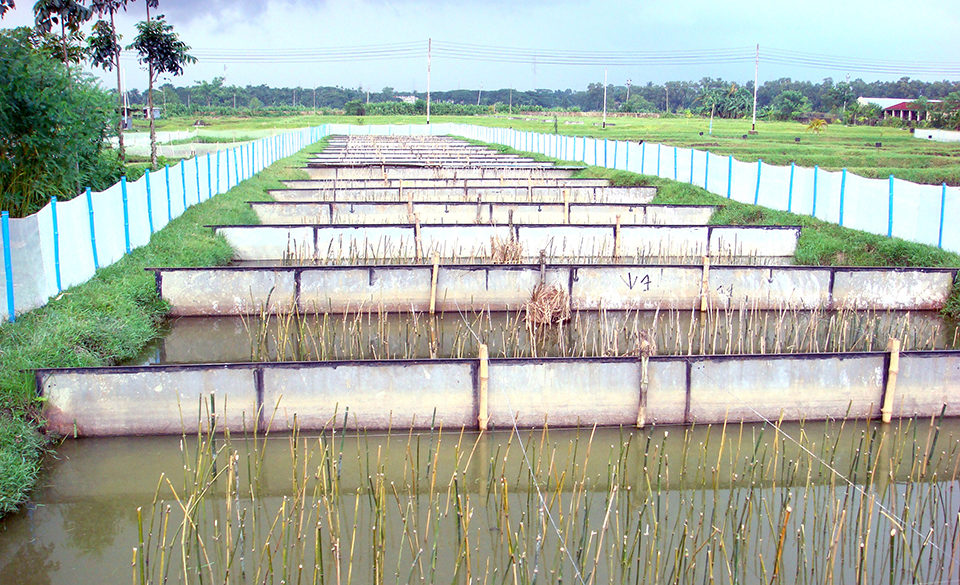
Stagnant ponds with limited inlet and drainage provide a stage for crustacean and finfish production in some countries. With no water exchange, farmers rely on the intrinsic self-purification capacity of the ponds. The major problem associated with aquaculture in stagnant ponds is rapid eutrophication, which results from increasing concentrations of nutrients and organic matter during culture.
In these stagnant ponds, formulated feeds are the principal nutrient input. To produce 1 kg live-weight fish, one typically needs 1 to 3 kg of dry-weight feed, depending on the culture species and quality of the feed. About one-third of the feed is not consumed and accumulates on pond bottoms in the form of organic waste.
The microbial decomposition of organic matter in stagnant systems leads to increased levels of total ammonia-nitrogen (TAN) and -nitrite, which are both harmful to freshwater prawns even at low concentration. Bacteria present in water and sediment transform TAN into nitrite and nitrate by nitrification. However, in stagnant water ponds, TAN tends to accumulate within the system due to insufficient nitrification activity.
Deteriorated water quality has resulted in disease outbreaks, financial losses and criticism from various environmental organizations regarding environmental responsibility. Therefore, the production potential of aquaculture in stagnant ponds is limited and often associated with poor water quality, disease, high production costs and low economic benefits.
C:N-controlled periphyton-based system
To improve the functionality of stagnant pond culture, several approaches have been applied.
The first is microbial control of water quality and recycling of protein through the adjustment of the carbon:nitrogen (C:N) ratio in the pond. The second is based upon the application of vertical substrates and development of periphyton, a mixture of algae, cyanobacteria, microbes and detritus that adheres to submerged surfaces. This combination improves water quality and provides shelter and additional food for the cultured species, thereby improving productivity.
The third approach is fish-driven resuspension, improving nutrients retention and farm productivity. Studies have shown that each of the three techniques enhanced production in stagnant ponds, and enhanced production was obtained through synergism between the techniques.
C:N-controlled, periphyton-based systems combine and upgrade the three approaches. This technology requires installation of hard substrates and application of cheap carbohydrates, resources that can be produced within farmers’ traditional agricultural systems. With this technology, the utilization of the aquatic food web is optimized by encouraging bacteria and epiphytic production, and hence recycling nutrients and enlarging the microbial-based food web.
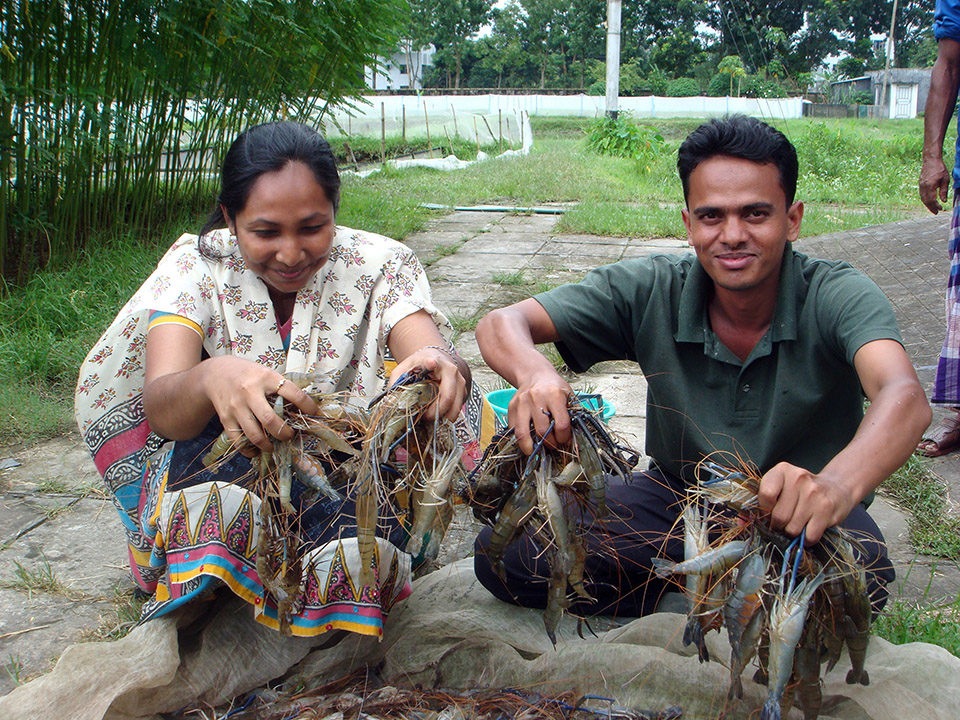
Study setup
The authors followed a stepped approach to develop a C:N-controlled, periphyton-based freshwater prawn-farming system. Initially they evaluated whether increasing the C:N ratio from 10 to 20 in combination with providing vertical substrates for periphyton development enhanced overall pond productivity in monoculture prawn ponds. The authors later added finfish (tilapia and/or rohu carp) to the freshwater prawns for more effective use of underutilized natural food items and optimized their stocking density.
The research took place in stagnant earthen pond systems prepared by liming and fertilization with urea, triple super phosphate and cow manure. In the periphyton treatment ponds, 15 side shoots of bamboo per square meter were posted vertically into the bottom mud. Freshwater prawns were stocked at 2-3 individuals per square meter. A locally formulated and prepared feed containing 28 to 30 percent crude protein with a C:N ratio of 10 was applied to all ponds. To raise the C:N ratio of the feed input to 20, tapioca starch or maize flour was applied separately as a source of carbohydrate in addition to the artificial feed.
Toxic compounds reduced
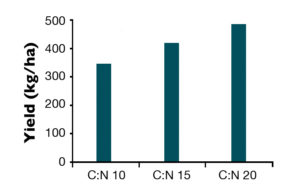
Uneaten feed and feces contribute to the organic matter load in the sediment of prawn-farming ponds. In stagnant ponds, the oxygen supply to the bottom sediment is limited. Mineralization of accumulated organic matter under anaerobic conditions leads to the formation of toxic metabolites like TAN and nitrite, spoiling the living environment of the freshwater prawns.
The accumulation of inorganic nitrogen in stagnant ponds can be minimized by the addition of organic carbon sources with a wide C:N ratio and reduction of feed protein content. Increasing the C:N ratio from 10 to 20 reduced the TAN concentration by 67.2 percent and nitrite by 36.4 percent, with a large fraction of the input nitrogen incorporated in new bacteria cells (single-cell proteins).
In addition, the periphyton community took up both TAN and nitrate, and edible biomass was formed. Therefore, the C:N-controlled, periphyton-based (C:N-CP) system improved toxic nitrogenous compounds problems in stagnant ponds and thereby offered a promising option to reduce frequency of water exchange a limited or zero water-exchange system.
Improved production
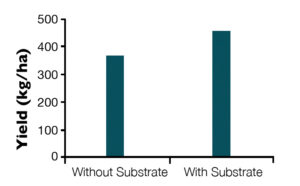
In addition to water quality control, increasing the C:N ratio led to the build-up of microbial protein that contributed to fish nutrition and thereby improved production. The net yield of freshwater prawns increased by 22.2 percent due to increasing the C:N ratio from 10 to 15. A further increase of 14.8 percent resulted from raising the C:N ratio from 15 to 20 (Fig. 1).
The higher yield in the study showed that freshwater prawns could well utilize the additional protein derived from the increased bacterial biomass as a result of increasing C:N ratio from 10 to 20. Although not confirmed in the study, the authors hypothesized that, as reported for other species, microbial floc might be utilized by freshwater prawns as food source.
This was supported by a 19 percent reduction of the feed-conversion ratio in C:N ratio 20 ponds compared to C:N ratio 10 ponds. C:N ratio control increased freshwater prawn production 40 percent while the water quality was better.
The addition of the bamboo substrates for periphyton development increased the net yield of freshwater prawns by 23 percent (Fig. 2). This was mainly due to increased survival, since periphyton substrates did not have an effect on individual weight at harvest. The substrates might have minimized the territoriality effects of the prawns. In addition, substrates addition decreased feed-conversion ratios by 13 percent by contributing periphyton as additional food.
The effects of C:N ratio control and substrate addition for periphyton development were additive. Therefore, the C:N-CP system increased the net yield of freshwater prawns by 75 percent.
Fish raise total yield
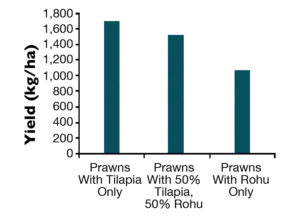
The analysis of natural food communities in C:N-CP ponds showed that the biomass of plankton and periphyton was totally unutilized in freshwater prawn monoculture ponds. Therefore, the authors proposed, inclusion of fish species like tilapia and/or rohu that graze on plankton and periphyton could further increase production and improve environmental quality and system stability. In addition, tilapia are well known for their sediment resuspension activity.
Adding 0.5 tilapia per square meter improved total production with no additional artificial feed or significant negative effects on prawn production. This result suggested that natural food items could help meet the nutritional demands of tilapia.
In another experiment, three combinations of fish were stocked at 0.5 fish per square meter: 100 percent tilapia (100T), 50 percent tilapia and 50 percent rohu (50T/50R), and 100 percent rohu (100R). The net yield of fish in the 100 percent tilapia treatment was the highest (Fig. 3). The benefit:cost ratio of the same treatment was 31 and 137 percent higher when compared with treatments 50T/50R and 100R, respectively. The result confirmed that addition of tilapia to C:N-CP ponds improved the natural food utilization, pond productivity and economic benefits.
(Editor’s Note: This article was originally published in the November/December 2010 print edition of the Global Aquaculture Advocate.)
Now that you've reached the end of the article ...
… please consider supporting GSA’s mission to advance responsible seafood practices through education, advocacy and third-party assurances. The Advocate aims to document the evolution of responsible seafood practices and share the expansive knowledge of our vast network of contributors.
By becoming a Global Seafood Alliance member, you’re ensuring that all of the pre-competitive work we do through member benefits, resources and events can continue. Individual membership costs just $50 a year.
Not a GSA member? Join us.
Authors
-
M. Asaduzzaman
Department of Fisheries Management
Bangladesh Agricultural University
Mymensingh-2202, Bangladesh[109,111,99,46,111,111,104,97,121,64,117,97,98,110,97,109,97,122,95,97]
-
Dr. M.A. Wahab
Department of Fisheries Management
Bangladesh Agricultural University
Mymensingh-2202, Bangladesh -
Dr. M.C.J. Verdegem
Fish Culture and Fisheries Group
Department of Animal Sciences
Wageningen University
Wageningen, The Netherlands -
Dr. J.A.J. Verreth
Fish Culture and Fisheries Group
Department of Animal Sciences
Wageningen University
Wageningen, The Netherlands
Tagged With
Related Posts
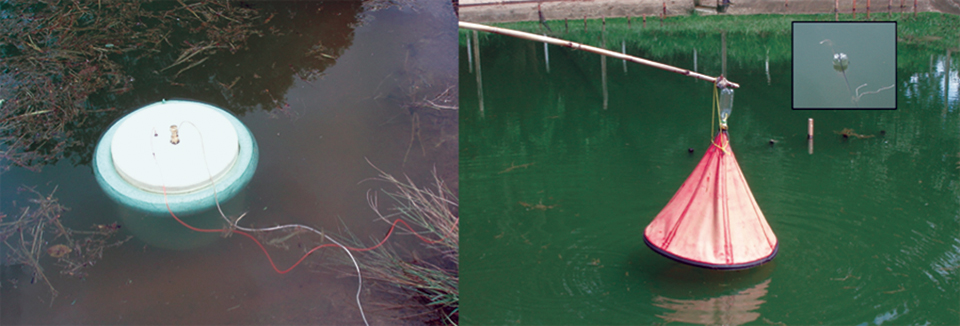
Responsibility
Greenhouse gas emissions from aquaculture
To quantify the carbon dioxide and methane fluxes in tropical earthen ponds, the authors used freshwater prawn farming managed according to different strategies as a model.
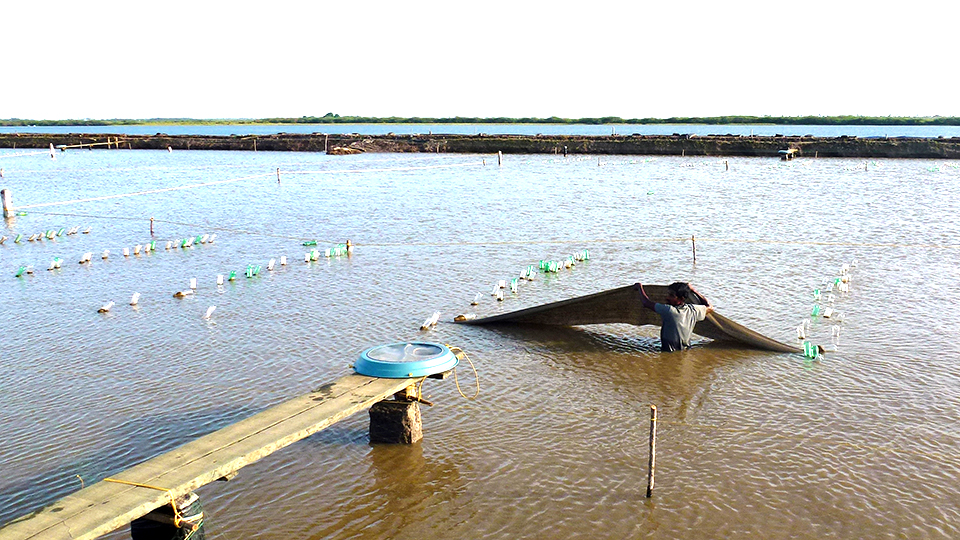
Health & Welfare
Nitrogen isotope for evaluating protein uptake in biofloc systems
Measurements of nitrogen isotope uptake can enable more efficient study of feed utilization in whole aquaculture pond systems.
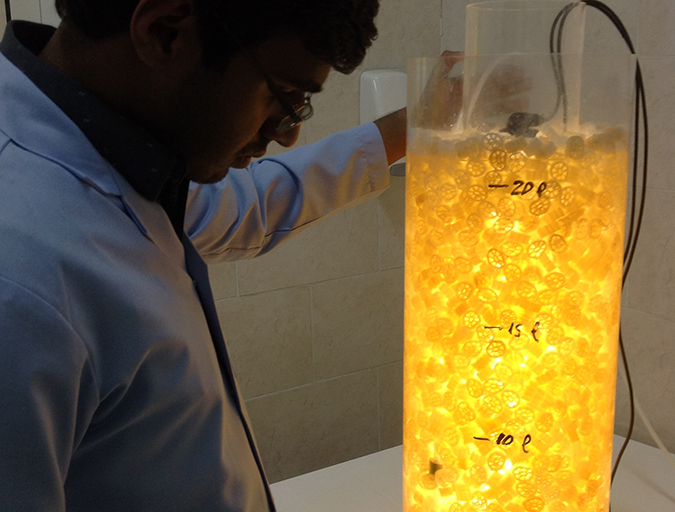
Aquafeeds
Novel reactor developed for indoor, high-density production of diatoms
The development of this reactor for the indoor cultivation of non-suspended microalgae like important diatoms such as Amphora spp., and the cellular dry matter values produced in this study will help bio-filming science support the development and improvement of in situ feed supplementation for fish and shrimp ponds, particularly in desert environments.
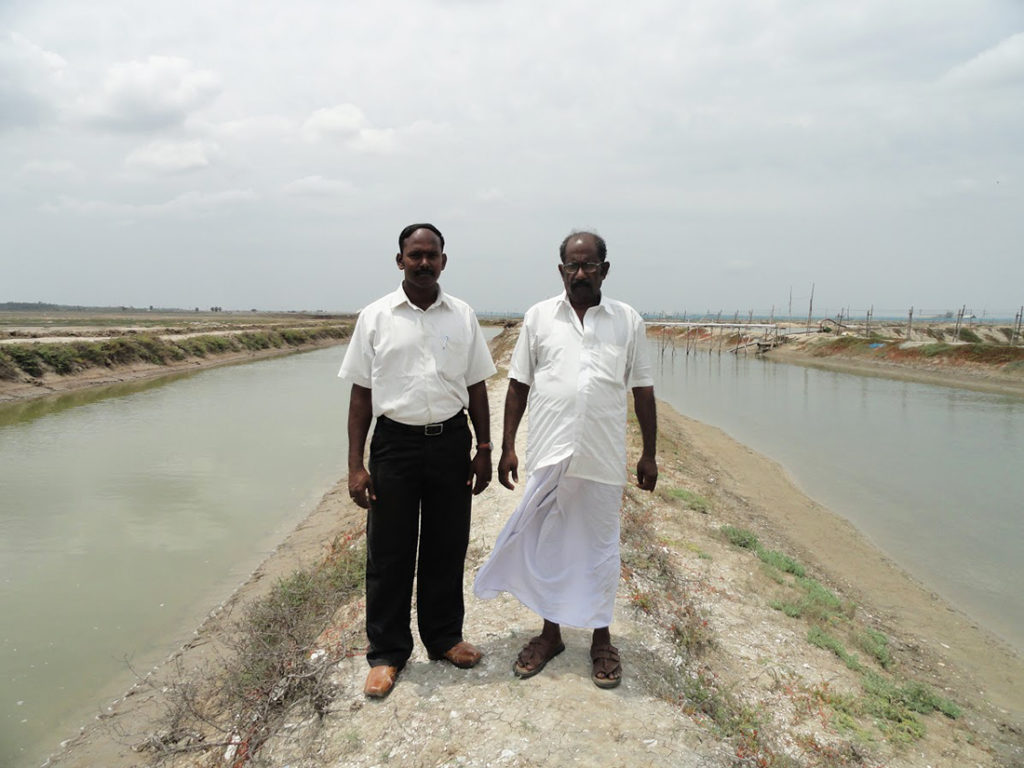
Responsibility
Improving shrimp farm design in flood-prone areas of India
Shrimp farm design improvements like reservoirs and recirculation canals can help small-scale shrimp farmers protect their infrastructure and improve production in flood-prone areas of India and elsewhere.



